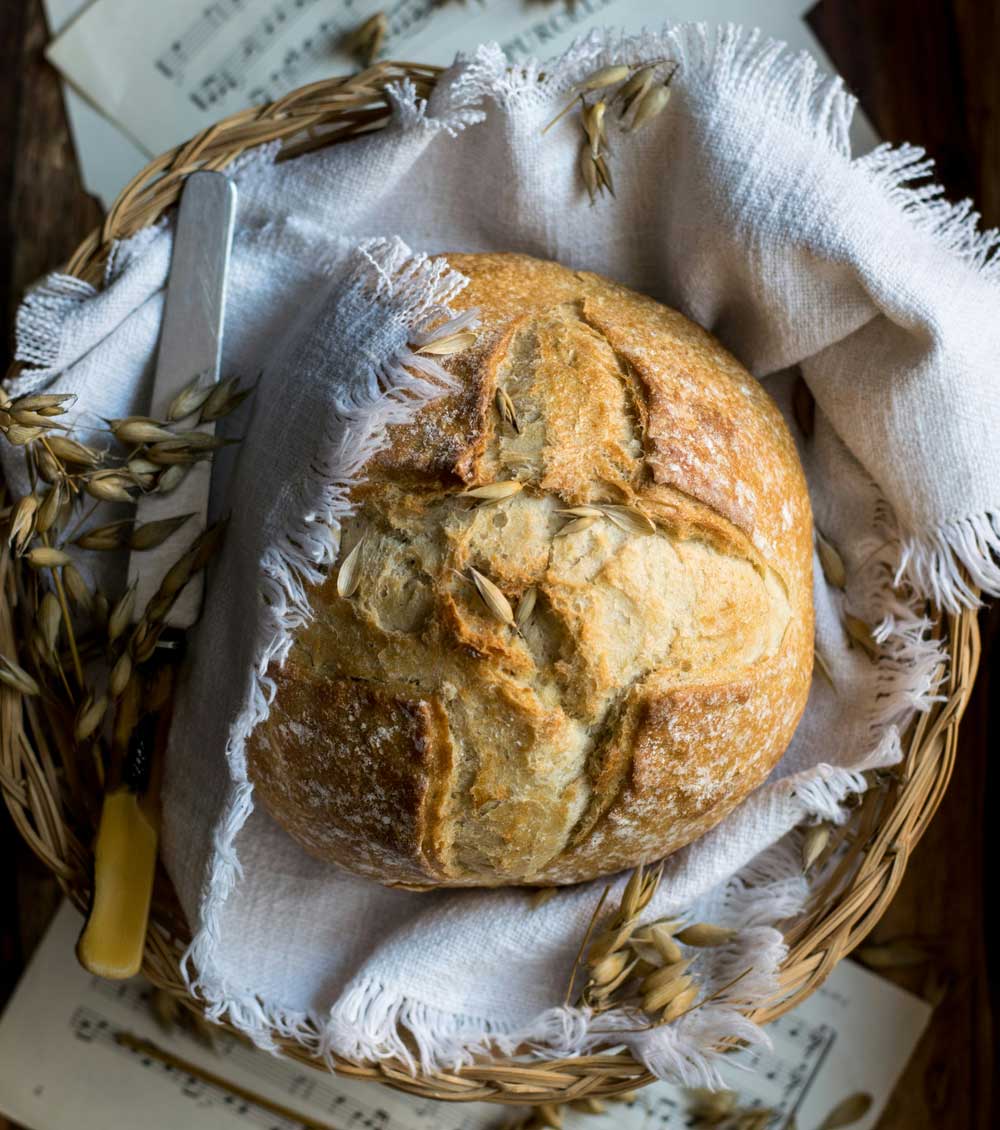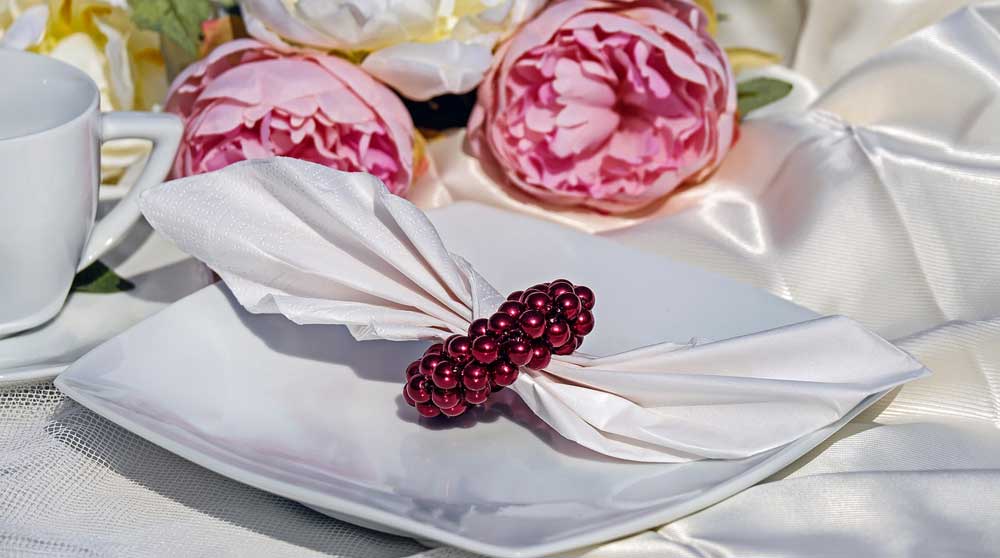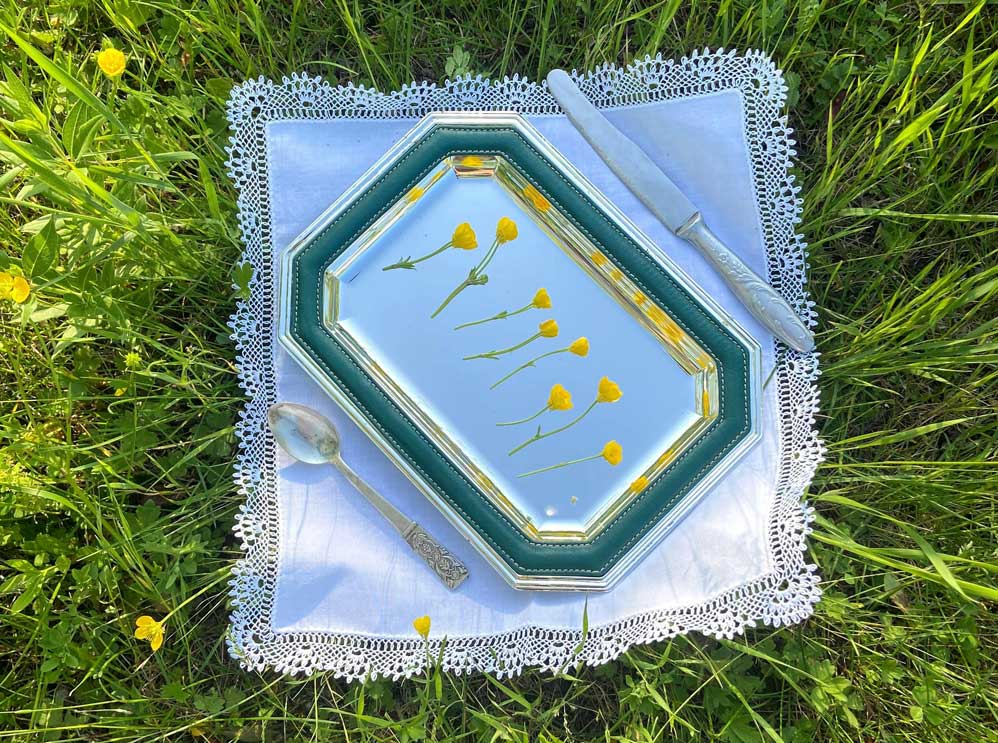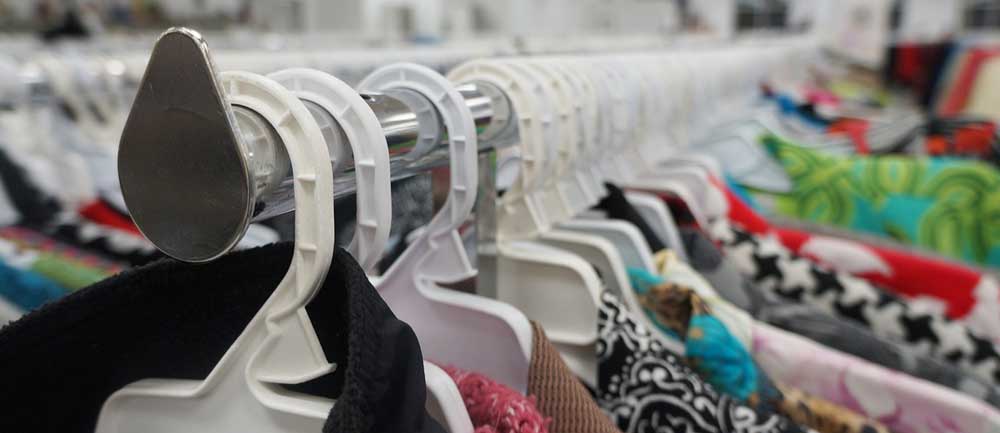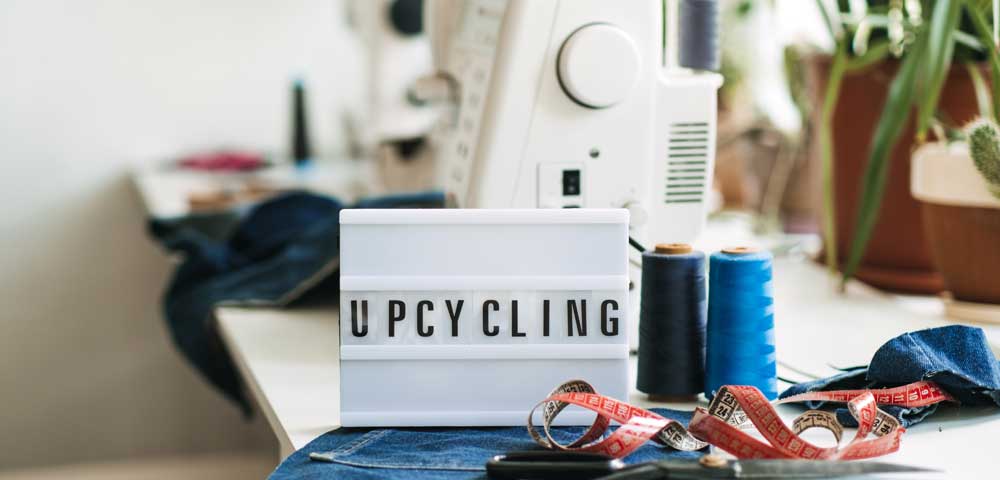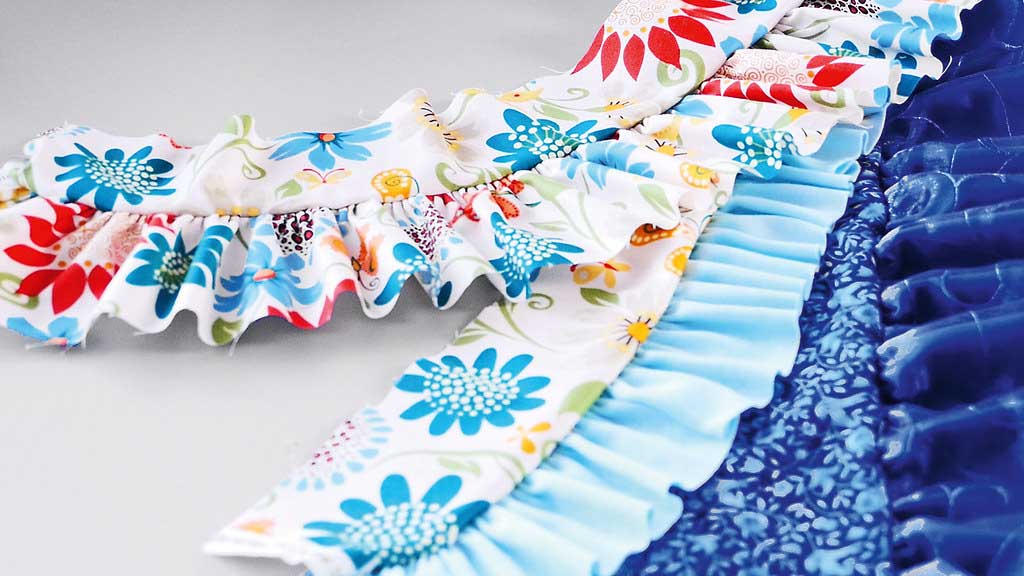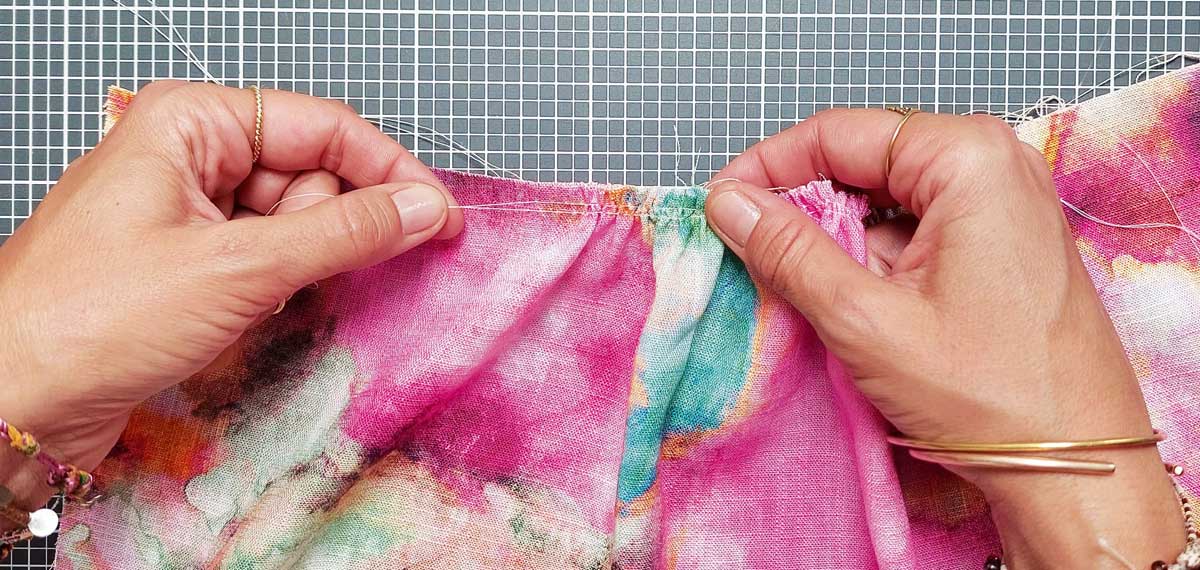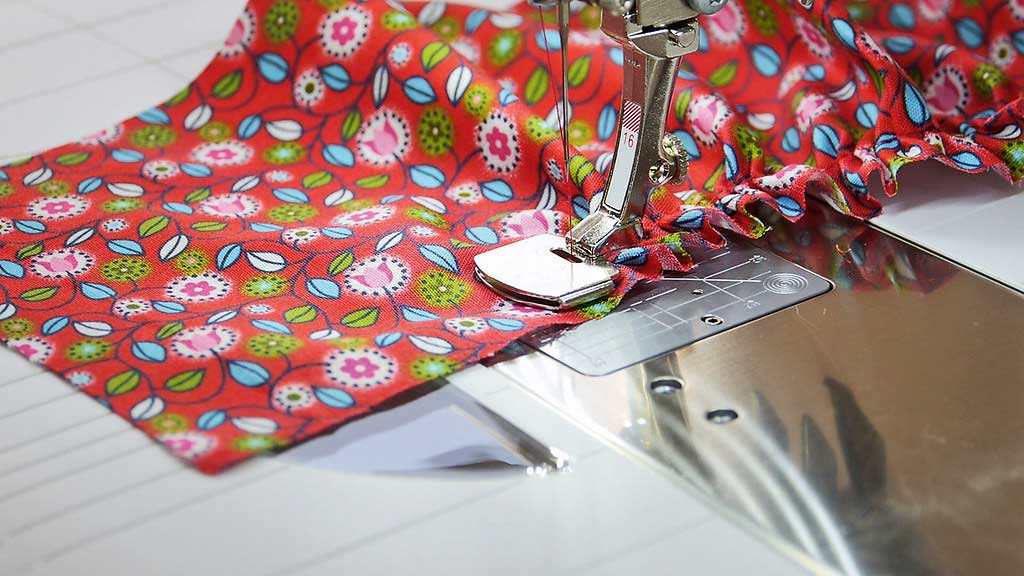Whether you’re planning to bling out a ready-made T-shirt or denim jacket, or you’re planning to embellish a garment you’re constructing, iron-ons can help you become an artist.
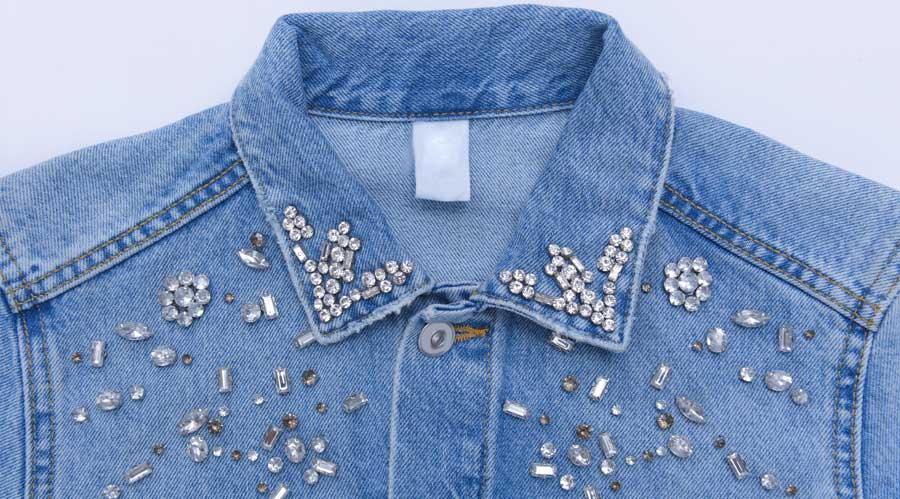
Iron-on designs are available with small, single motifs, or more elaborate large designs, depending on your preference. Pre-made designs are temporarily affixed to a paper or plastic sheet, which acts like a pressing cloth during adhesion and is then removed once the design is fixed in place.
Look for a variety of types of embellishments, from crystals and pearls to rhinestones, nail heads, studs and sequins.
In addition, individual adhesive-backed design components can be purchased if you want to create your own motif. Items like rhinestones, crystals, etc. are usually sold in bags by size expressed in millimeters.
A hard and protected work surface, like a glass or ceramic cutting board is ideal for applying iron-ons, whether a full design or individual bits.
One-by-one
If you’re applying individual components, a hot tool applicator is ideal as the wand shaped tool holds the item in place while it melts the adhesive on the back of the jewel. Most hot tools come with multiple tips so you can choose which one fits your embellishments the best.
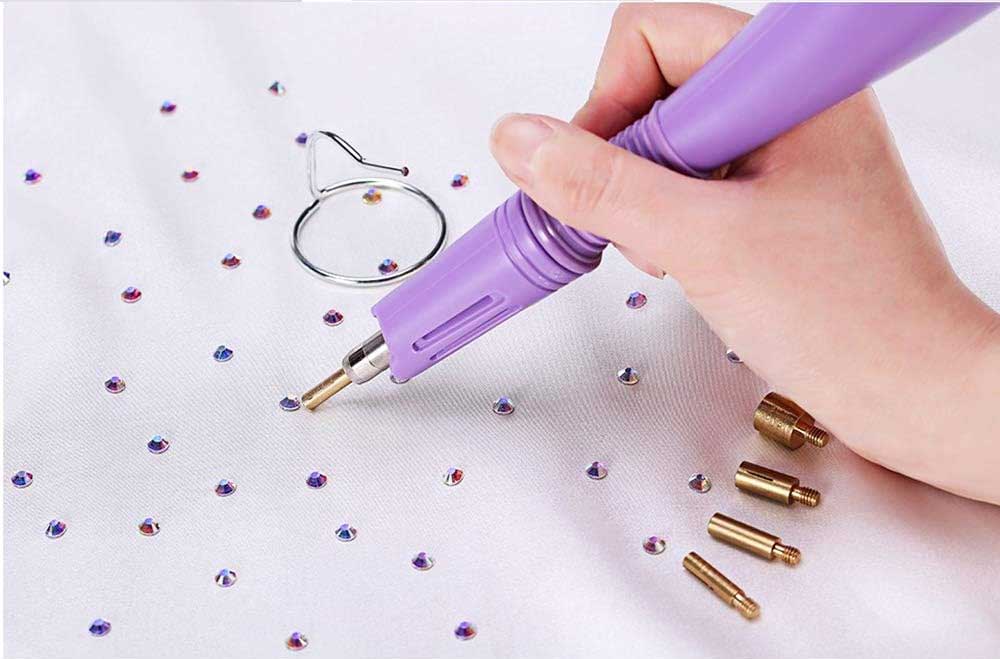
Unless you’re randomly scattering jewels, it’s a good idea to draw your design on the fabric (with a removal marker) before you start placing the components.
When using a hot tool, be sure your fabric can withstand the heat needed for the application process without melting or distorting. Test-affix an extra jewel or two onto a scrap, or a hidden area of the garment (like a hem) to get a feel for the process.
Depending on the brand of hot tool you’re using, most tips allow you to actually pick up the individual embellishment with the tool and set it onto the fabric base, then release. Some tools (and jewels) require holding the tool in place for a designated number of seconds to be sure the backing adhesive melts into place. Follow the instructions in detail, as holding a hot tool in place too long can result in the backing adhesive seeping out from under the gemstone or melting the fabric below.
Apply all the embellishments needed to complete the planned design. If you have different sizes of jewels, switch out the hot tool tips to accommodate the sizes.
Design Wise
Using pre-made iron-on designs is easier for most people, rather than applying jewels individually, especially if you’re covering a large area.
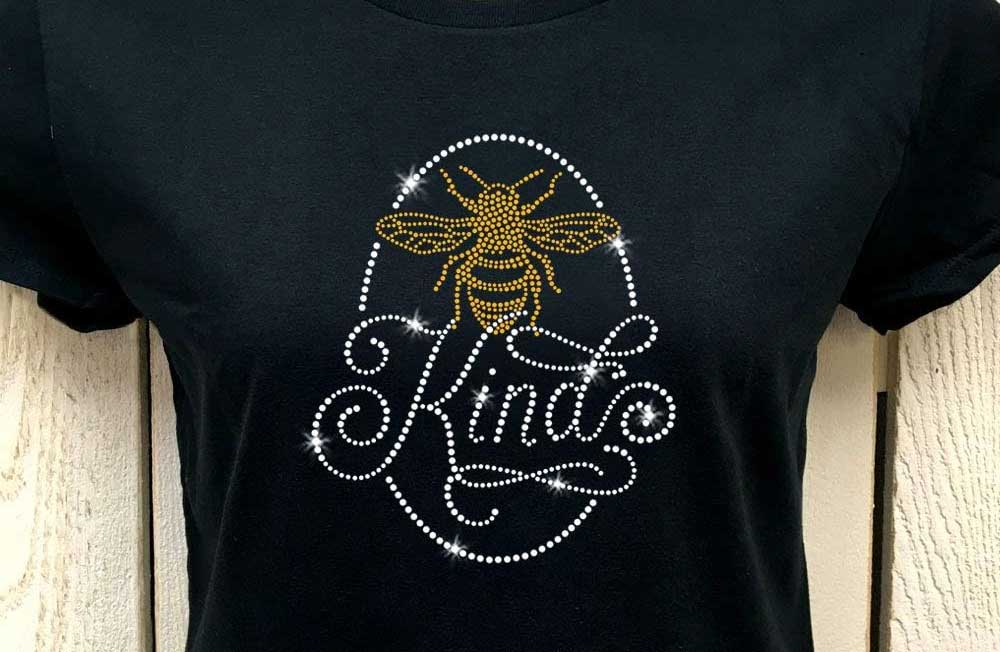
Instructions for applying motifs will vary by brand, so be sure to read the directions for your particular motifs. But, the general process is to position the motif on the right side of your garment/fabric, with the protective sheet uppermost. Press in place with a dry iron, then turn the design over (wrong side up) and press again to be sure the adhesive has melted into the fabric base. The motif instructions will tell you how long to press. Remove the protective sheet, following the product instructions—some brands remove the sheet while the design is still warm, others recommend waiting until the design is cool.
If there are any individual components that didn’t adhere for some reason, re-fuse them separately following the same process. Occasionally, when you’re trying to apply a motif to a large area with seams within (think denim jacket with flat-felled seams), the added thickness of the seams can wreak havoc with the adhesion. To resolve this, just carefully re-fuse the components in the thicker area, or add some fabric glue to help hold the gems in place.
When and where?
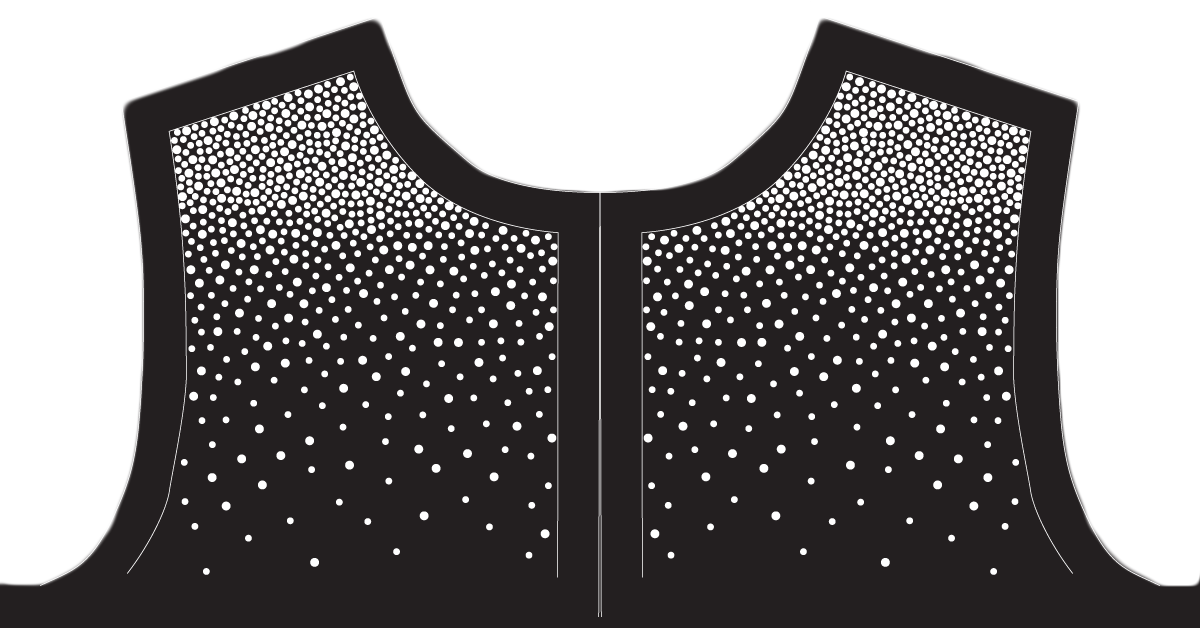
You can apply iron-ons to either a finished garment or to one in progress. If you’re working with the latter, you can draw your pattern shape onto the fabric and working within the lines prior to cutting, or cut out the garment first, then apply the embellishment. Just remember to keep the gems inside the seam lines as you don’t want to hit them during construction.
~Linda Griepentrog is the owner of G Wiz Creative Services and she does writing, editing and designing for companies in the sewing, crafting and quilting industries. In addition, she escorts fabric shopping tours to Hong Kong. She lives at the Oregon Coast with her husband Keith, and three dogs, Yohnuh, Abby, and Lizzie. Contact her at .





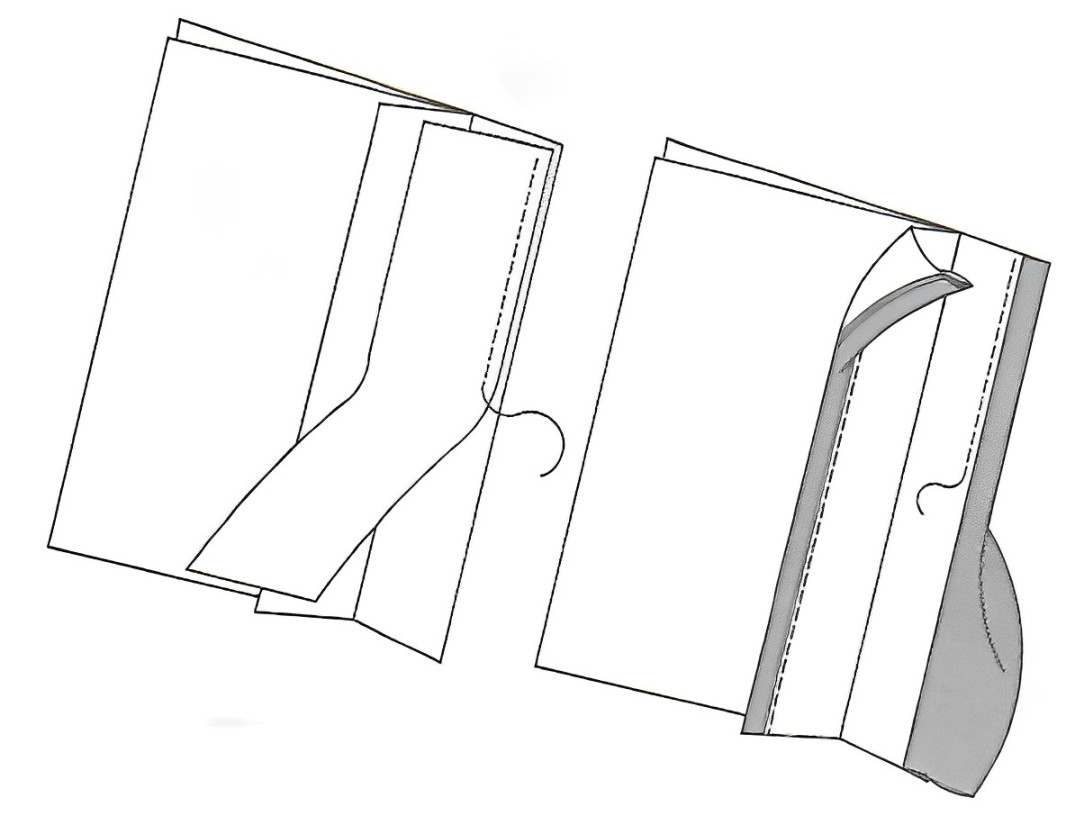
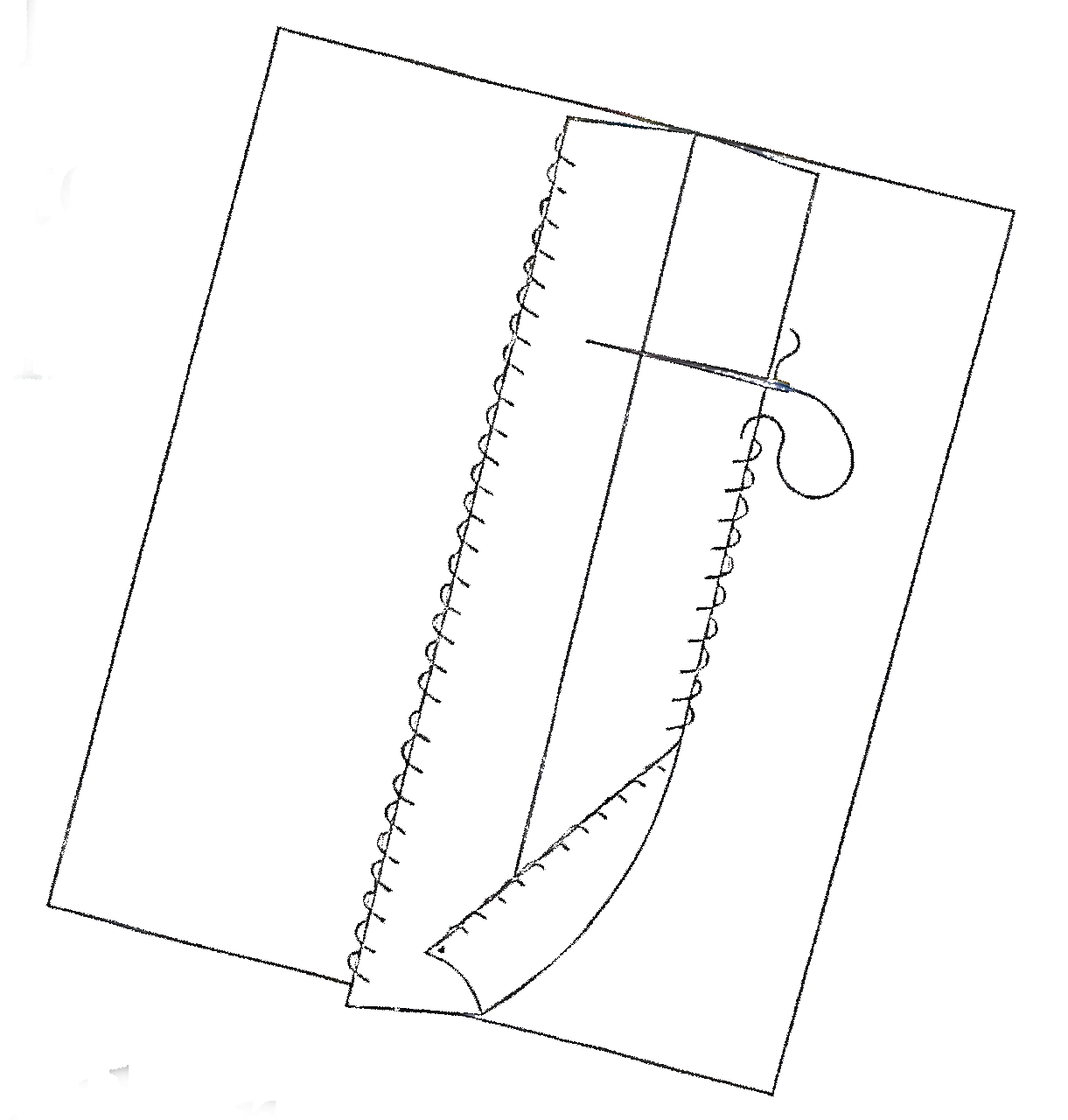
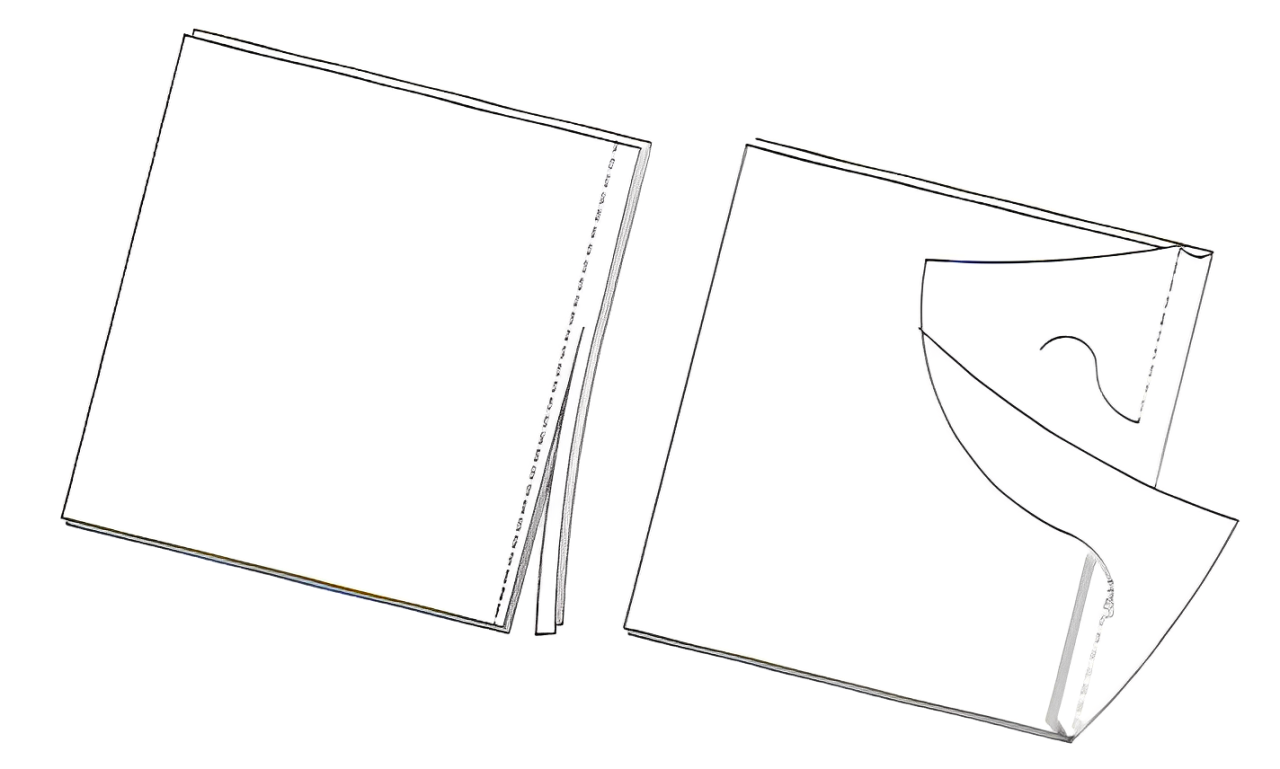
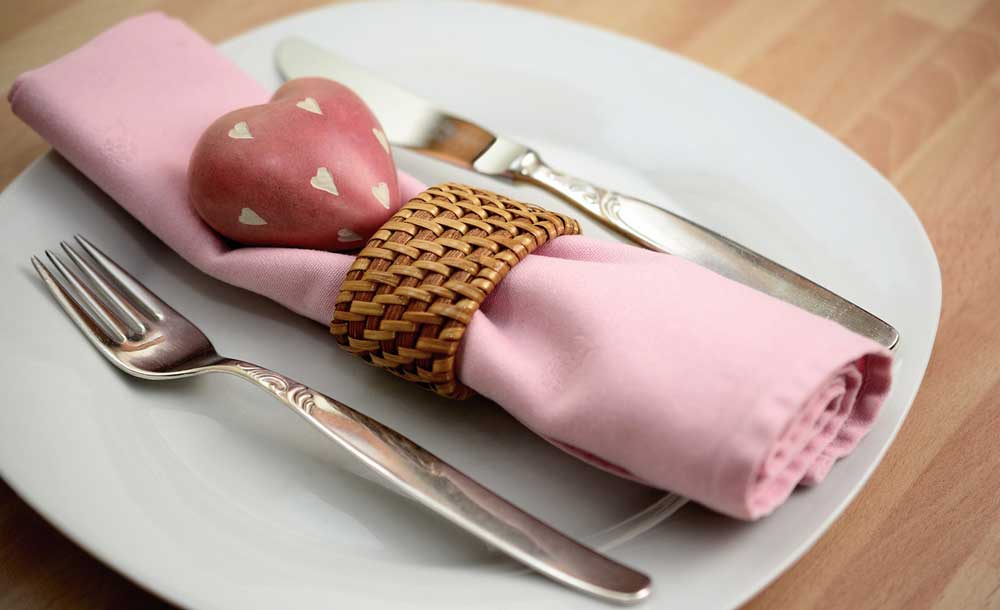
 The key decision for napkin-makers is choosing an edge finish. There are many options, so let us count the ways.
The key decision for napkin-makers is choosing an edge finish. There are many options, so let us count the ways.